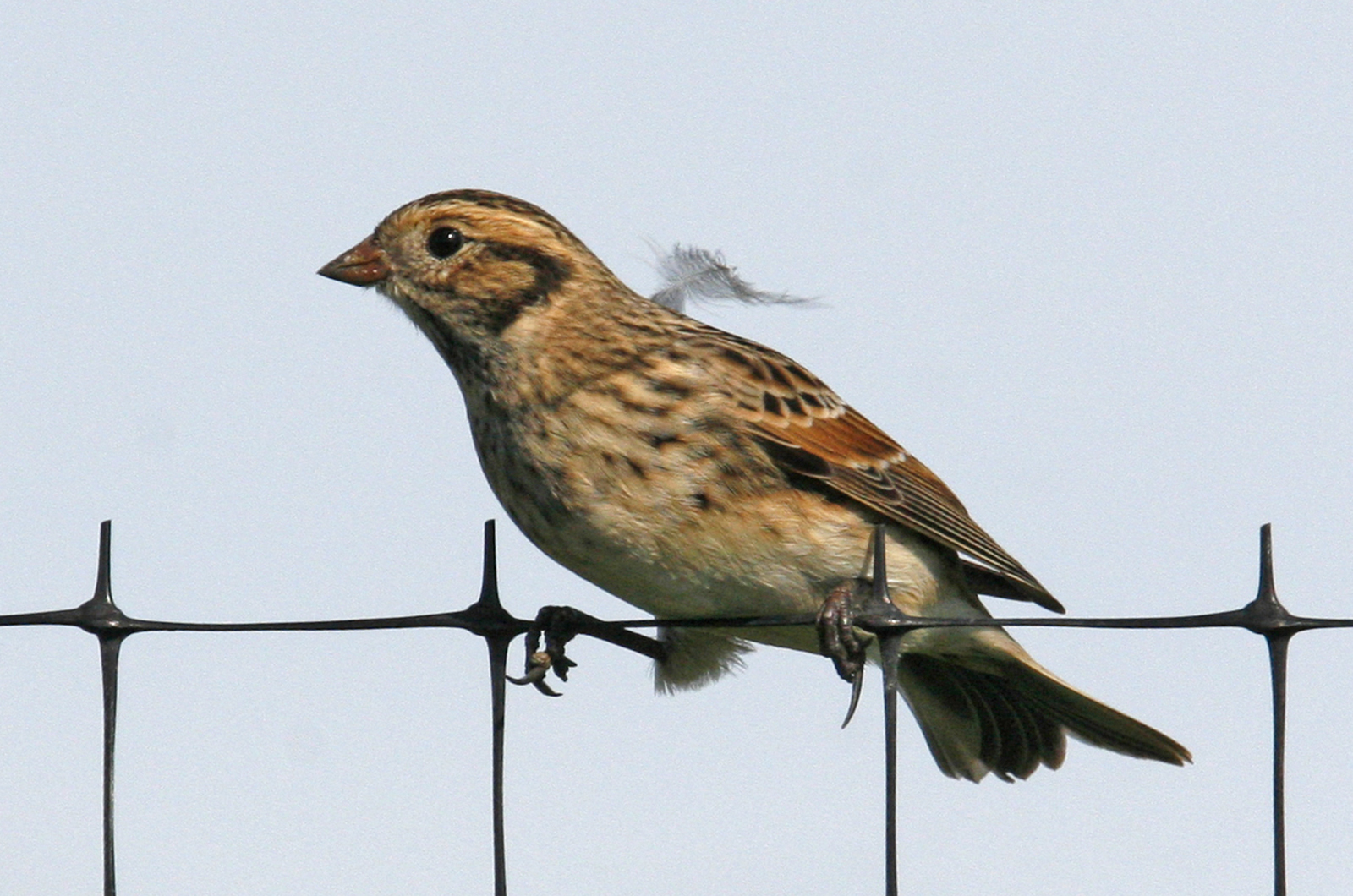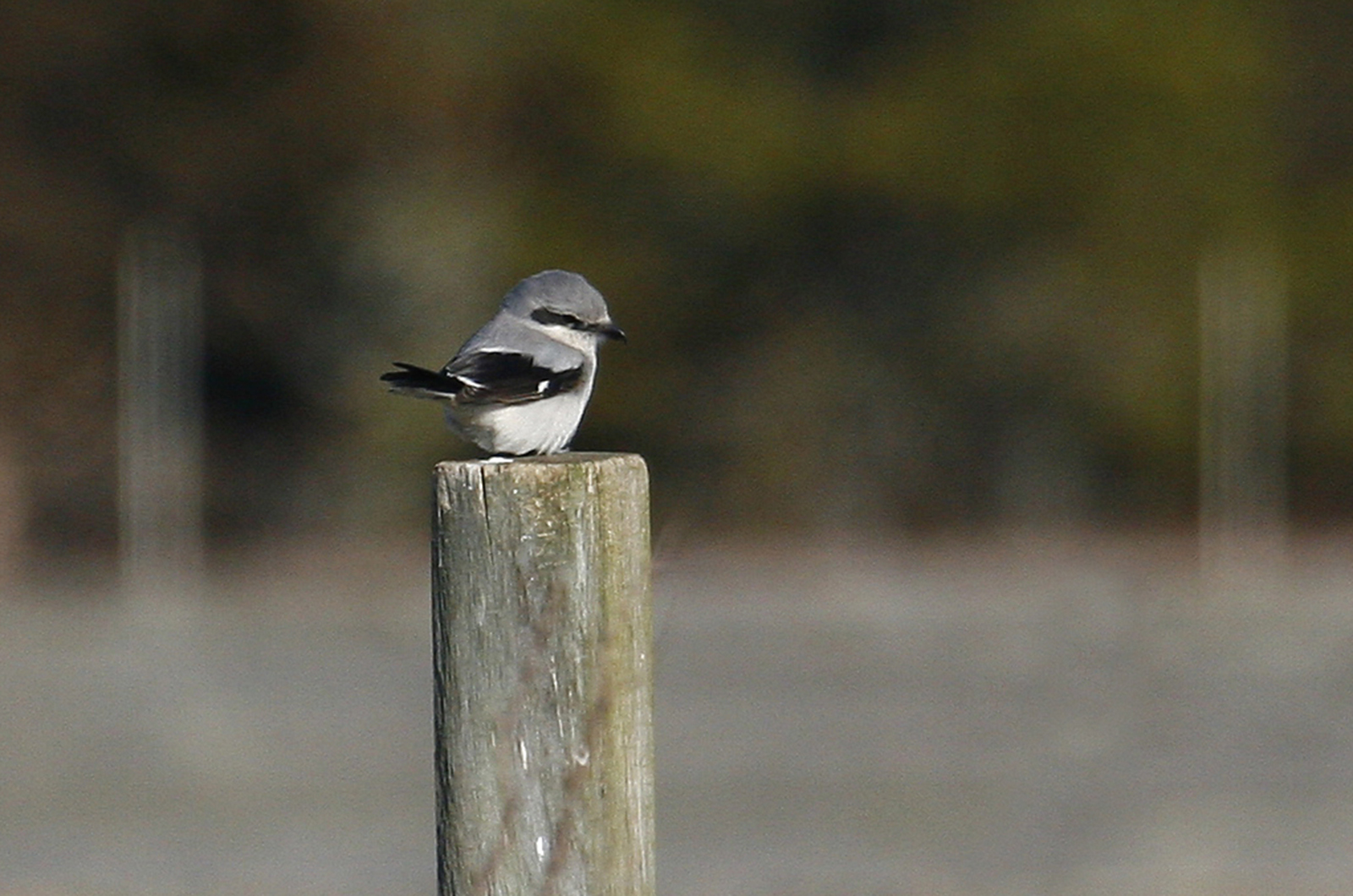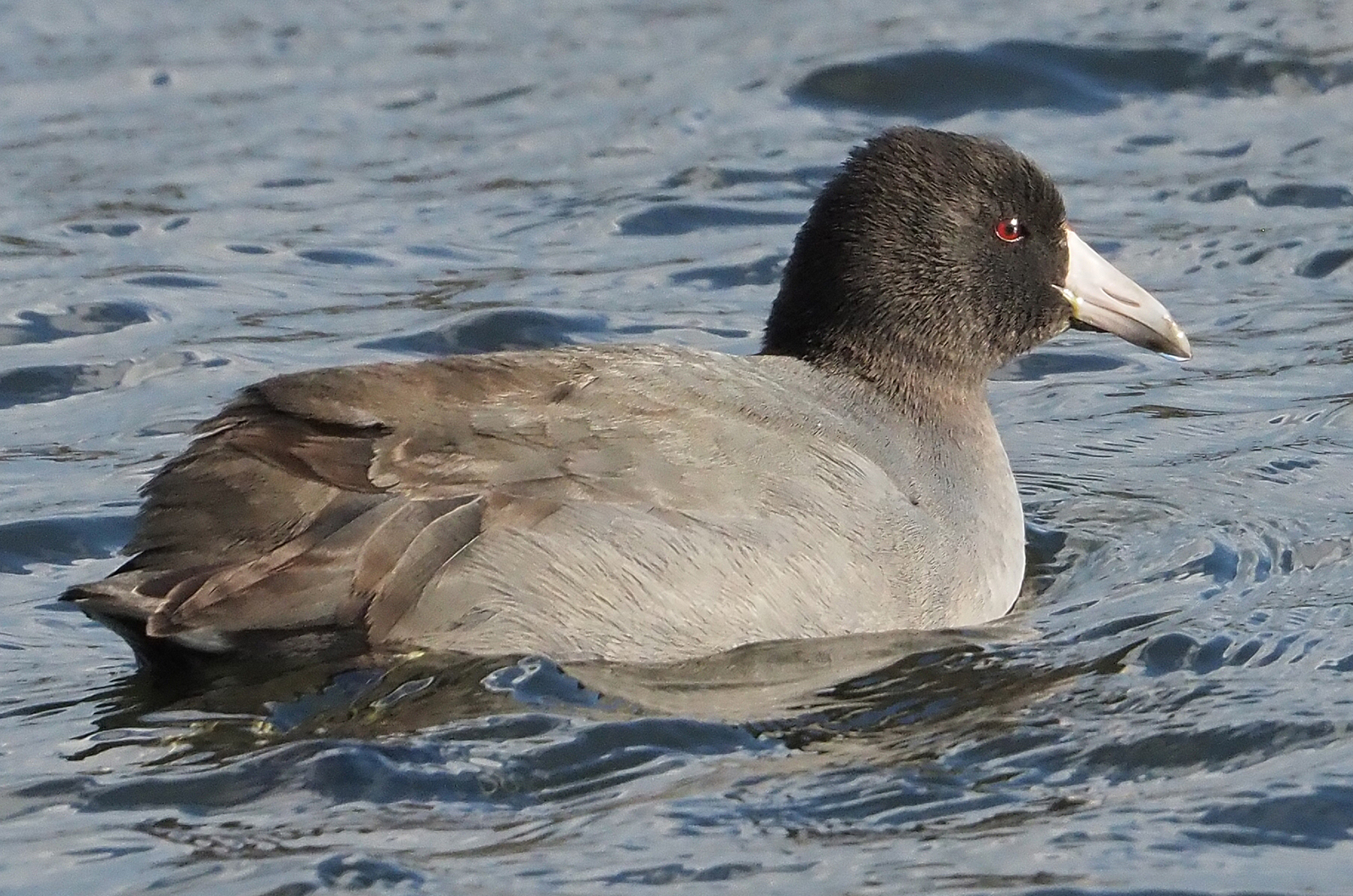Spring?
The shortest daylight was more than two weeks ago, with sunrise about three minutes later and sunset about 11 minutes earlier. Why is the sunrise later while sunset is earlier? No matter, I will take the extra daylight, knowing that even more is on the way.
Birds have also noticed the increasing daylight. Every morning I hear Carolina wrens either singing or scolding and the white-breasted nuthatches are “singing” their “yank-yank-yank.” Listen to the increasing amounts of bird song as January progresses.
Our winter resident birds are continuing to show up. Only one new species appeared this week, a Lapland longspur, which is a species that has been on the Cape for a month or more. David Benvent found one at Norton Fields Preserve on Jan. 5, The longspur was with a flock of 24 horned larks, another ground-loving species.
Red-breasted nuthatches have been around in small numbers but the field teams did not find one during the recent Christmas Bird Count. Chris Scott spotted two red-breasted nuthatches at Bold Meadow in Edgartown on Jan. 4, the day after the count period ended.
Birds that might go south for the winter are still lingering. Most notable are the ducks, Eurasian wigeon, northern shoveler, redhead, and ruddy duck. Will they stay for the winter or will they depart soon for points south?
Multiple observers have seen the Eurasian wigeon at Crystal Lake. They are: Warren Woessner on Jan. 1, Michael Ditchfield on Jan. 3, Chris Scott and Nancy Weaver on Jan. 4, David Benvent on Jan. 5 and Nancy Nordin, Sea Williams and Bridget Dunnigan) on Jan. 6.
The three shovelers that were at Crystal Lake are more secretive and may have split up. Joanne Hus saw a male and a female shoveler in Mud Creek — the pond between Martha’s Vineyard Museum and Veterans Memorial Park in Vineyard Haven — on Jan. 2, Meanwhile, at Crystal Lake, Chris Scott and Nancy Weaver found one on Jan. 4 and David Benvent saw it on Jan. 5.
There have been three recent sightings of the redhead duck. David Benvent found one on Chilmark Pond on Jan. 4, and both Nancy Nordin and Chris Scott found one at Chilmark Pond on Jan. 6.
Warren Woessner spotted a small flock of ruddy ducks at Crackatuxet Cove on Jan. 6 and David Benvent counted approximately 200 of them at that location. This species is more commonly present in Squibnocket Pond during the winter.
Another lingering duck — the northern pintail — has had one sighting so far this month. Bob Shriber, Bridget Dun nigan and Sea Williams found eight of them in Town Cove on Jan. 5. And David Benvent saw the lingering snow goose at Katama within a flock of Canada geese.
Two other lingering species are the greater yellowlegs and the tree swallow. Warren Woessner found a flock of five of the former species on Jan. 6 at Wilson’s Landing and Anne Whiting and Tara Whiting-Wells found one at Black Point Beach.
Also on Jan. 6, Anne Whiting and Tara Whiting-Wells saw a couple of flocks of tree swallows, with 10 to 12 in each flock, at Black Point Beach. There were two other sightings of this species that day: Anne Whiting visited Quansoo Farm and saw 20 tree swallows and Olsen Houghton observed a flock of 28 at Wilfrid’s Pond.
Perhaps the most unexpected lingering species is the black-throated blue warbler found at a feeder during the Christmas Bird Count on Dec. 31. It is not “supposed” to be here at this time of the year, but David Benvent saw it again on Jan. 5.
Tony Lima found a dovekie at the intersection of Richmond and Norris avenues in Oak Bluffs on Jan. 7 and knew that this small seabird would not survive there away from salt water, so he caught it and released it in Sunset Lake in apparently good health.
Speaking of dovekies and the Christmas Bird Count, Ben Clock examined one of his photos from the count and discovered a dovekie in the ocean off the Gay Head Cliffs. Amazingly, the next day Brian Harrington and Traci Winn found it again — a small bird on a big ocean. That photo sighting means we saw 127 species on count day. On only five other counts since 1960 have we seen more species; we saw 130 in 2007 and 2003, 129 in 1998, 128 in 2001 and 1995 and 127 in 1999.
The number of species seen raises an interesting question. We averaged 119 species or less from 1980 to 1994 and again from 2008 to 2022, but averaged 124 species from 1995 to 2007. Which is normal, the lower or the higher results?
Count period species — meaning the species seen either three days before or three days after the Dec. 31 count day — have been documented: peregrine falcon, American coot, northern shrike and American pipits.
Anne Culbert and I spotted a peregrine falcon as it sped northward past Sepiessa Point on Dec. 29. Multiple observers found an American coot: Pete Gilmore spotted one on Dec. 30 at Crackatuxet Cove and Warren Woessner found one there on Jan. 1. That same day Nancy Weaver observed one at the Oak Bluffs pumping station, likely the same bird that David Benvent spotted the next day.
Bob Shriber found a northern shrike in Blacksmith Valley on Dec. 30. Chris Scott found a flock of 10 American pipits at Katama Farm on Jan. 3, the same day that both David Benvent and Chris Scott spotted a few pipits at the Aquinnah Circle.
Finally, on Jan. 7 David Benvent spotted a flock of 40 pipits at Katama, a flock also seen by Bob Shriber and Nancy Nordin.
Please email your sightings to birds@vineyardgazette.com.
Robert Culbert is an ecological consultant with Nature Watch LLC living in Vineyard Haven.








Comments
Comment policy »